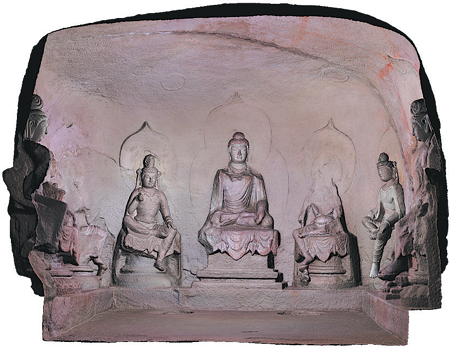

These digital restorations are also filling a cultural gap, due to the complicated legal process involved in the physical return of artworks taken from China.
In September 2020, Japan's Toei Kokusai auction house announced the auction of a stone Buddha head later confirmed to have been smuggled from Tianlong Mountain Grottoes' Cave 8 in 1924.
After negotiations facilitated by China's National Cultural Heritage Administration, the auction house and the Japanese holder of the artifact reached an agreement to donate the head back to its place of origin.
Huo Zhengxin, a professor at China University of Political Science and Law's International Law School, said returning looted artifacts had pitfalls.
"Many Chinese people abroad buy looted relics and donate them back, which can sometimes play into the hands of dealers exploiting patriotic sentiments," Huo said.
He cited the case of the Yuanmingyuan's bronze zodiac heads, whose value skyrocketed from $1,500 in 1985 to 14 million euros in 2009 due to high demand from Chinese collectors.
The 1970 Convention on the Means of Prohibiting and Preventing the Illicit Import, Export, and Transfer of Cultural Property and the 1995 UNIDROIT Convention on Stolen or Illegally Exported Cultural Objects underpin global efforts to return stolen cultural objects.
However, Huo believes their impact is limited. He said they do not apply retroactively, complicating the reclamation of artifacts stolen before they were adopted.
In addition, countries such as former colonial powers and the US, which have major antiquities markets, have yet to ratify these agreements. Some countries even have laws such as statutes of limitations that impede the return of stolen artifacts.
Therefore, digital restoration of cultural relics is a crucial "intermediate step" before their physical return, Huo said.